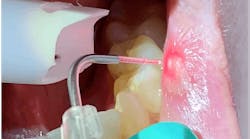My last blog post discussed some of the fundamental differences between the current understanding of periodontal disease and the new model—specifically, the central role of Porphyromonas gingivalis (P. gingivalis) in kicking off the entire process and that a small quantity of P. gingivalis is all that is necessary to get things rolling. Current thinking required a lot of periodontal pathogens, which, if it were true, gave us more wiggle room.
In addition to hijacking the genetic expression of the other members of the oral microbial community, P. gingivalis impairs the gingival immune response, and it is the gingival immune response that keeps other bacteria in check. The ability of the other members of the community to survive—combined with the genetic expression of virulence factors by bacteria currently understood to be nonparticipants in tissue destruction—is a gruesome development.
Impairment of the immune response and influencing the genetics of the entire oral microbial community by P. gingivalis are the reasons it is now called a keystone pathogen, rather than a periodontal pathogen. The term periodontal pathogen was reserved for the small number of bacterial species capable of participating in periodontal disease. With everyone now invited to the party, they are all perio pathogens; hence the distinction of P. gingivalis as the ring leader with the new title that goes along with it.
Ongoing research will tease out additional details, including the factors that stimulate P. gingivalis to wake up and start stirring the pot. The new model of periodontal disease development and progression indicates that the entire microbial community is involved in periodontal disease. Whether or not this means every single species or a significant proportion of them also remains to be revealed.
What does all this mean for patients and clinicians? Tune in next time for some thoughts and suggestions.








